What is braising? Understand and master the classic cooking technique that delivers complex, rich flavors and sublime, tender textures.
What is Braising? A definition of the classic cooking method
Braising is slowly and gently cooking meat or other foods in a relatively small amount of liquid.
There are multiple approaches to the technique, depending on the type of food and exactly how it is handled.
The overwhelming majority of braises undergo a browning stage, where essential flavor compounds are created through searing the food (Maillard reaction), but this step is not always required (detailed section below). To that extent braising is not always a combination cooking method.
The principal advantages of braising are:
- the creation of maximum flavor (layer upon layer of it)
- the creation of tender texture (especially in the case of tougher cuts of red meat)
- its ease of execution (braising is very low key and easy to master)
For example well worked muscles such as pork shoulder or lamb shoulder or tough cuts of meat such as beef short ribs or chuck roast achieve absolute fork tenderness through the proces of brasing.
Cookware Suitable for Braising
As an official technique with defined parameters braising originated in France, even though it has been an essential cooking method of multiple international cuisines for centuries. The French word braisière means a braising pan, a vessel for braising meats and not surprisingly famous French cookware makers Le Creuset and Staub both sell several versions of a braiser, a larger, deep enameled cast iron pan with a tight fitting lid.
At home you can use various other cookware for braising – pots, pans, Dutch ovens, casserole dishes, slow cookers etc. If braising for larger parties you can even use roasting pans and foil in lieu of a lid. For example in a busy, high volume restaurant kitchen Chris uses either large, deep, heavy duty roasting pans, tightly covered with two layers of foil to create a seal or commercial braisers, especially built to handle the job.
Types of Braising
- Meat Braises. When applied to meat braising truly transforms a tough cut into perfectly tender and juicy delicacy. The consistent, low moist heat gently breaks down the connective tissues, liquefies the collagen into gelatin and leaves exquisitely tender meat. There are two main approaches to braising red meat:
- Brown braising. By far the more popular one; the meat is browned and through the Maillard reaction new flavors are born as amino acids and sugars on its surface interact to create new flavor.
- White braising. The meat is not seared/browned prior to being braised, it is only cooked long enough to heat it to the appropriate internal temperature.
- Chicken Braises. Poultry braises are almost always brown braises (classic chicken Fricassee being one of the most notable exceptions). And because chicken meat is already tender it does not require a long braising time. But the technique is still very useful because while it slowly cooks in the braising liquid the chicken meat exudes its flavors into it and absorbs those used to create the liquid itself. All the ingredients imbue each other and the results are delicious.
- Poelage. This is a specific braising technique when a whole chicken or chicken parts with the skin on are braised in fat only (also see pot-roasting/poeler below). Initially the meat is braised covered, eventually the temperature is increased, the lid removed and the chicken allowed to become crispy.
- Fish Braises. The classic method is to cook the whole fish, starting it on the stove top and finishing it in the oven, with enough liquid to come up the sides, about halfway.
- En sauce. When only the fillets of the fish are used and cooked in the above manner the proper culinary term is cooking the fish en sauce ( in translation from French, in sauce)
- Vegetable Braises. All kinds of vegetables can benefit from the slow, gentle cooking with a flavorful liquid. Most frequently they are browned a bit first, to maximize flavor, but on certain occasions the step can be omitted, similarly to white braising a red meat.
Ideal Braising Temperature
The French have another word that they like to use in conjunction with braising – mijoter. It means to simmer or to cook something slowly. Furthermore, as many classic French cooking books will inform you, the simmering is to performed on the stove, with the lid on. This of course does not limit the braising options and the oven seems to be the dominant choice today.
- For stove top braises (or slow cooker) – the liquid should gently simmer, with occasional bubbles breaking its surface. This visual is all you need, so adjust the heat accordingly.
- For oven braises – set your oven to 275-300 F depending on how strong it tends to be (no two ovens are calibrated the same). As a rule of thumb – lower and slower is better.
NOTE: Many recipes for braising meat you will encounter advise that the braising liquid be brought to boil first, then allowed to temper down to just below a simmer with a lowering of the temperature. This is being advised due to food safety concerns as most bacteria likely to be found on the surface of meat die during boiling. Classic recipes advise that the braising liquid is directly brought to a gentle simmer.
Beyond the Main Ingredients – Composing The Braising Liquid
Braising’s reliance on gentle cooking via steady, moist heat underscores the importance of composing as flavorful cooking liquid as possible. To that end the use of certain flavor enriching ingredients is heavily relied upon. These include:
- aromatics – vegetables like onions, shallots, peppers, celery, carrots, garlic, chiles
- herbs, spices & other ingredients – thyme, oregano, bay leaf, parsley, etc., a multitude of spices including many derived form seeds such as coriander or roots such as ginger; flavor and texture boosting ingredients such as nuts, dried mushrooms, Parmesan cheese rind
- flavorful moistening liquids
- umami – beef broth, chicken, fish or vegetable broths and stocks, anchovies, tomato paste, clam juice, soy sauce,
- acidic & alcoholic – vinegars, citrus juices, wine, beer, rum and more
Braising vs Stewing
The difference between a stew and a braise is in the size of the cooking ingredients and amount of braising liquid used. In a stew the meat, fish or vegetables are cut into smaller pieces and cooked in a bit more liquid than a typical braise.
Braising vs Pot-Roasting
The term pot-roasting is frequently used to describe braising in a covered pot, but also to describe a number of other cooking methods. On that account it is somewhat confusing because the techniques in question can be in conflict with each other.
Possibly the most accurate use of pot-roasting is when it is applied to the poeler cooking method (from French poêler). It is used with poultry, fish or meats with the skin on. Essentially the poeler cooking method is ‘roasting’ in a covered pot with butter or other fat, then removing the lid, increasing the heat and allowing the skin to brown and become crispy in the oven.
If liquid is added, the poeler technique becomes closer to braising, which is why pot-roasting is so confusingly used to describe either method.
Dos and Don’ts – Essential Tips for Mastering Braising
The following tips will help you master braising as they address important aspects of the process.
- When browning meat before braising it is essential that:
- the meat is at room temperature – otherwise is will not brown properly and may even release liquids and begin to boil it its juice. No Maillard reaction will occur.
- the meat’s surface is dry – use paper towels to pat it dry and remove any excess moisture, also important for proper browning
- the meat be dusted with flour if your intention is to end up with a well bound finished liquid you can reduce to a gravy (it will not have a floury taste)
- Always brown in a hot pan or pot and do not crowd the pan when searing.
- Use aromatic vegetables such as onions, celery and carrots.
- Always deglaze and scrape the brown bits from the bottom of the pan or pot when deglazing so that they become part of the flavors in the braising liquid.
- Choose a braising vessel that is snug for the amount of meat you will be braising – the meat and liquid must be in close contact for the resulting flavors to be intense.
- Keep an eye on the intensity of the simmering and adjust the temperature if too rigorous, you should not be boiling the food.
- Check the level of liquid about halfway of the intended braising time – cooking juices tend to reduce, even when the vessel is covered, even with a tight fitting lid. If needed, add a bit of water to compensate for the evaporation.
What to Do With Leftover Braising Liquid
Braising liquids are a precious flavor bomb you can exploit to create more deliciousness. You can use leftover braising liquid for any of the following:
- create a sauce – whether you will use the sauce to serve with the braised food the liquid came from or for something you will cook next, all you have to do is simmer the liquid after you remove the braised food until it reduces enough to coat the back of a spoon. A short cut is to thicken the sauce with a slurry.
- create a gravy – you start a gravy in a separate sauce pan by cooking butter and flour and stir in the braising liquid, then simmer very gently.
- use to flavor other dishes – for example we often save the liquid from red meat braises with wine or beer to cook lentils in – we only add a bit of water, as needed to cook the lentils, but the rest of the flavor base is already there. If we braise lamb with white wine, rosemary and lemons any leftover braising liquid is welcome the next time we make couscous. And so on.
- freeze to use in future braises – Chris often reserves and freezes some of the excess cooking liquid to use as an ingredient to the same type of braise the next time it is to be cooked. The addition of that reserved liquid to the freshly made one creates an unbelievable intensity of flavor.
TIP: Save extra braising liquid and reuse it one way or another.
Watch This Demonstration of Braising
Braising Recipes
Braising is a cooking method which relies on slow cooking over gentle moist heat. Most frequently the food to be braised is browned first, in fat over high heat, which through the Maillard reaction creates new aromas and contributes to the rich, complex flavors intended for the braise.
The recipes that follow are classic braises and deliver exceptionally tender texture and maximum flavor.
Pork Shanks Braised with Dark Beer Sauce
Tried and true pork shank recipe that delivers fork tender meat permeated by deep flavors and smothered in a rich dark beer sauce made with the pan drippings. Keen carnivores can enjoy a full shank, shy diners can comfortably split one.
Braised Lamb Leg (Shawarma Spiced)
Fork tender braised leg of lamb permeated by the delicious flavors of shawarma seasoning. Perfect to serve family style with a variety of sides or to use in wraps. The pan drippings and left over braising liquid are converted to a sauce.
The Best Braised Spare Ribs (with Dark Beer Gravy)
Perfectly tender spare pork ribs braised in a flavorful liquid boosted by the roasty, malty notes of dark beer. The liquid is then transformed into a delicious gravy like sauce to serve with the spare ribs for a true comfort food dish.
Easy Beer Braised Short Ribs with Delectable Gravy
Succulent beef short ribs braised in a rich and flavorful liquid with roasty, malty undertones from dark ale. When done, the beer based braising liquid is converted into a decadent, luscious gravy.
Mock Tender Steak (Braised with Onions & Thyme)
Mock tender steak is a lean and chewy boneless cut of beef which is harvested from the chuck primal. Visually it resembles a tenderloin steak but it is not at all tender - hence the name. If cooked properly however it can be transformed into flavorful and easy to chew meat. This recipe instructs you to do just that.
Beer Braised Lamb Shanks (with Gravy)
Slowly cooked lamb shanks are braised in a delicious beer infused liquid until fall-off the bone tender. The braising liquid is then transformed into a silky, scrumptious gravy-like sauce. Oven method with a crock pot variation.
Beer Potatoes with Garlic, Butter & Herbs
Braised beer potatoes with butter, olive oil, garlic and herbs. This recipe works for all kinds of potato varieties. Go for a balanced or low bitterness beer with herbal/floral hoppy notes such Czech pilsner or Munich helles, bock or maibock, American craft lager, saison, Belgian golden.
Braised Pork Chops (with Onions & Ale)
Braised pork loin chops in sweet Belgian beer (or apple cider) and onions. Consider adding dried figs to the braising liquid to impart deeper sweetness. The flavors are rounded off in the end by adding some vinegar or mustard or both, just after the sauce is thickened with a slurry.
Skillet Beer Brats (Grill or Stove Top)
Skillet braised beer brats simmered in a malty sauce with soft onions and thyme. Serve on a hoagie roll topped with the onions or over mashed potatoes, smothered in the beer sauce.
Beef in Stout ( Braised with Onions & Guinness, Osso Buco Style or Cubed)
Traditional Irish recipe for beef in beer using Guinness and cross cut beef shanks of chuck short ribs. Braise the beef osso buco style or cut it in cubes before searing - your choice.
Beer Onion Gravy
Beer onion gravy is a staple complementary to a number of dishes. Bangers and mash, Yorkshire puddings, grilled chicken, pork chops or portabello mushrooms, even steamed rice welcome its sweet and savory goodness.
Braised Baby Bok Choy & Beef Meatballs
Baby bok choy and Chinese five spice beef meatballs are braised in a delicious malty, salty, umami goodness leveraging the robust tasted sweetness of bock lager (or similar flavor profile beers). This recipe is a keeper.
Belgian Rabbit Stew (with Prunes and Dark Abbey Ale)
Delicious, hearty rabbit stew with a medley of bold flavors and tender meat. Serves up to four depending on the size of the whole rabbit.
Easy Beer Brisket (Oven Braised or Slow Cooker)
How to make tender beer brisket in the oven or slow cooker. Tips on the most suitable beer styles to create a barbecue flavored braising liquid and a dramatic looking bark. Ideally use flat brisket and season the beef well in advance, then refrigerate.
Braised Country Style Ribs with Stout (Oven, Stove-top or Slow cooker)
Beer braised country-style pork ribs with delicious sauce made from the braising liquid. You can prepare them on the stove-top, or start them on the stove top and finish them in the oven or a slow cooker.
Beer Braised Sauerkraut and Bratwurst
Bavarian style beer bratwurst and sauerkraut. The sauerkraut is braised in a flavorful braising liquid with the bratwurst nestled on top.

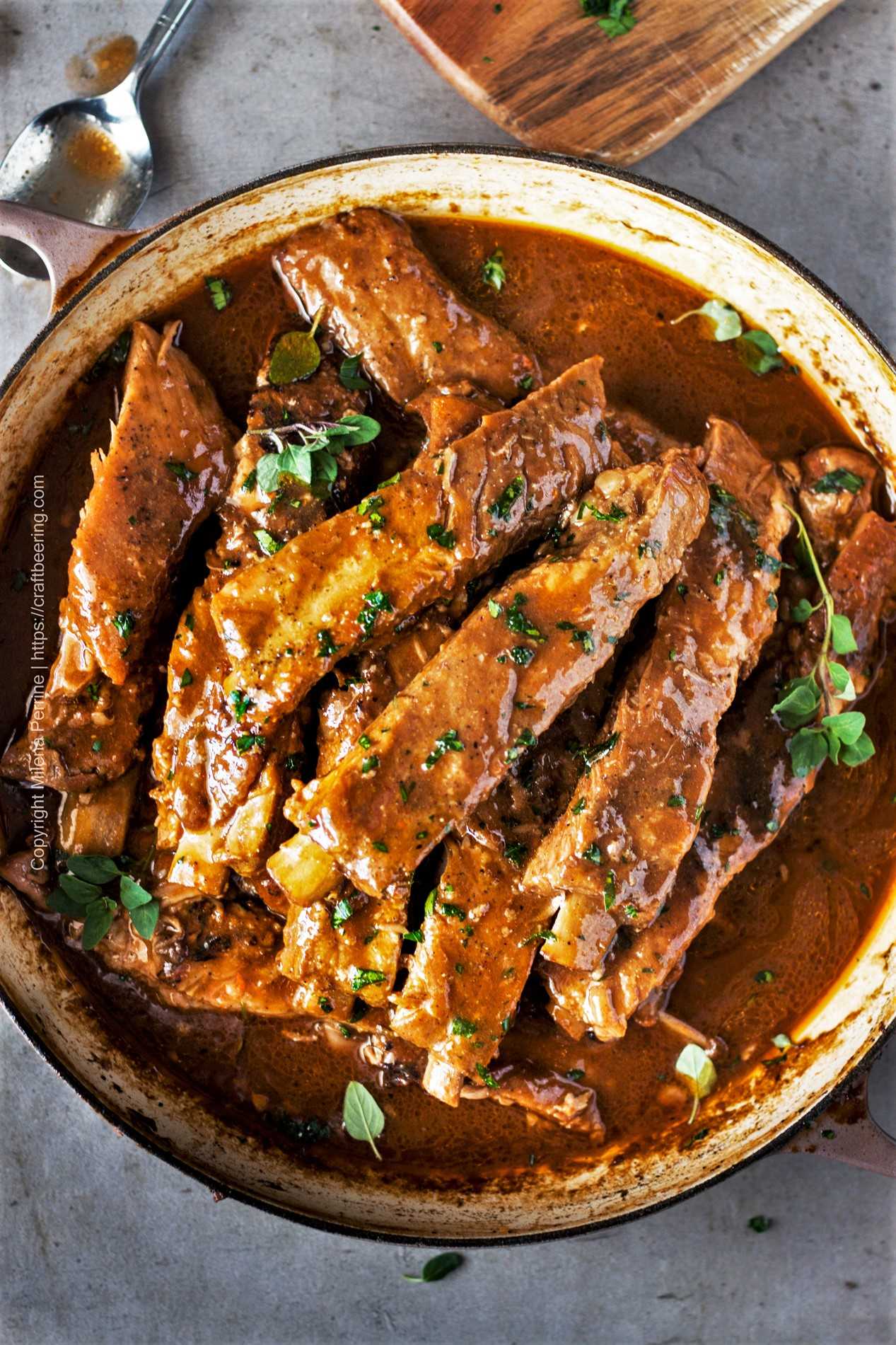
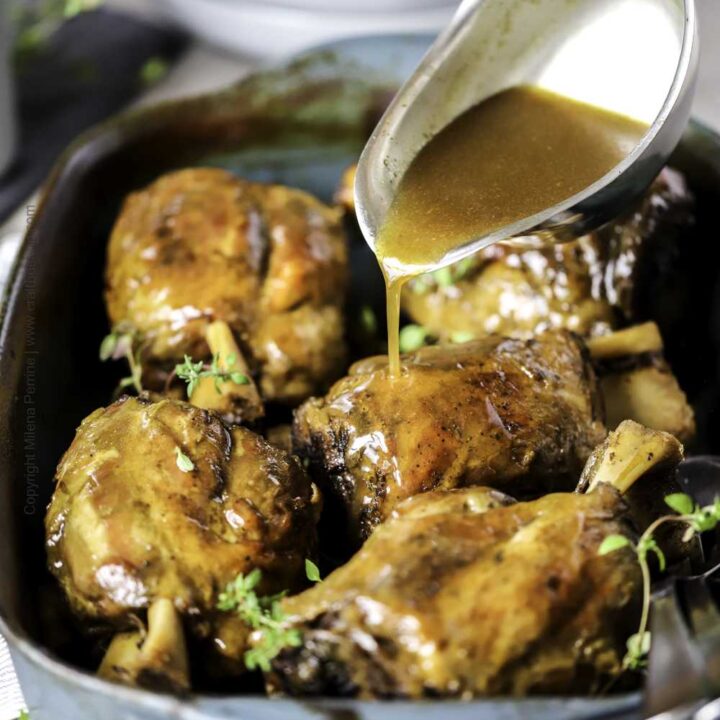
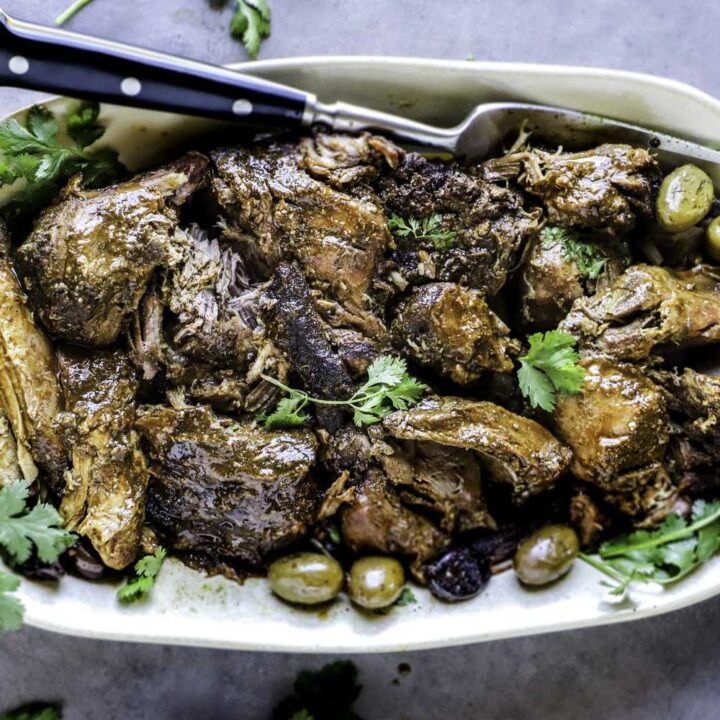
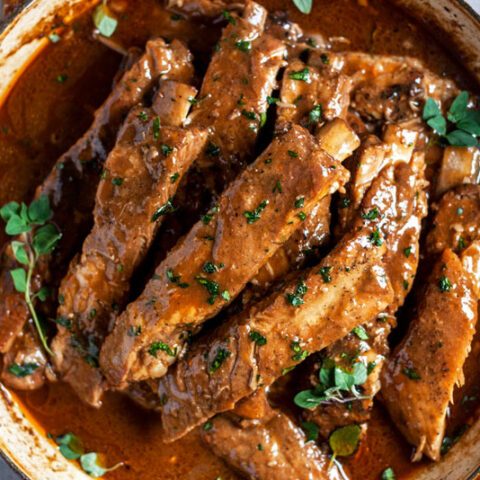
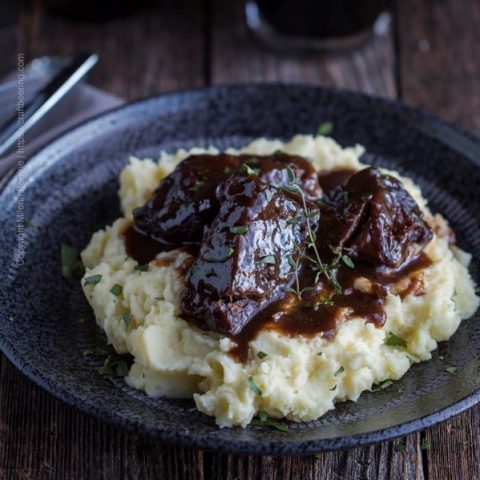
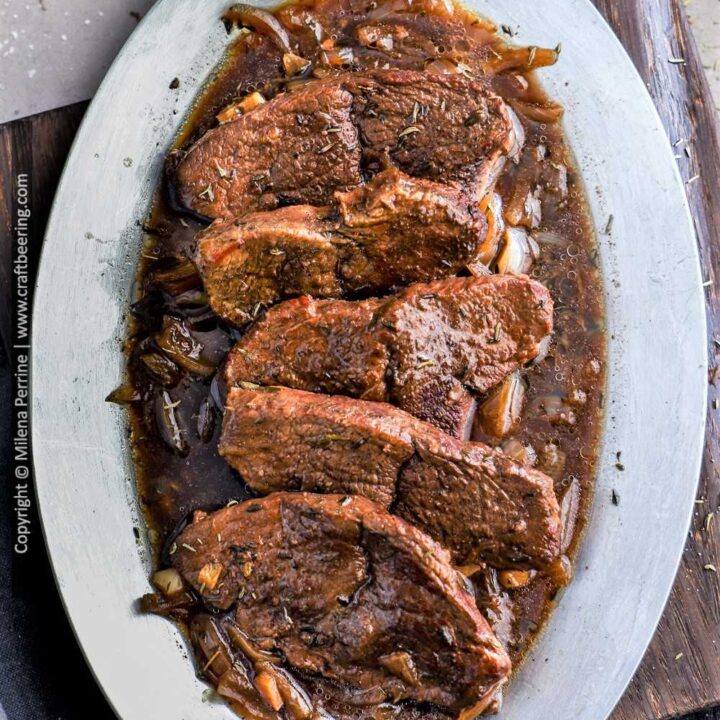
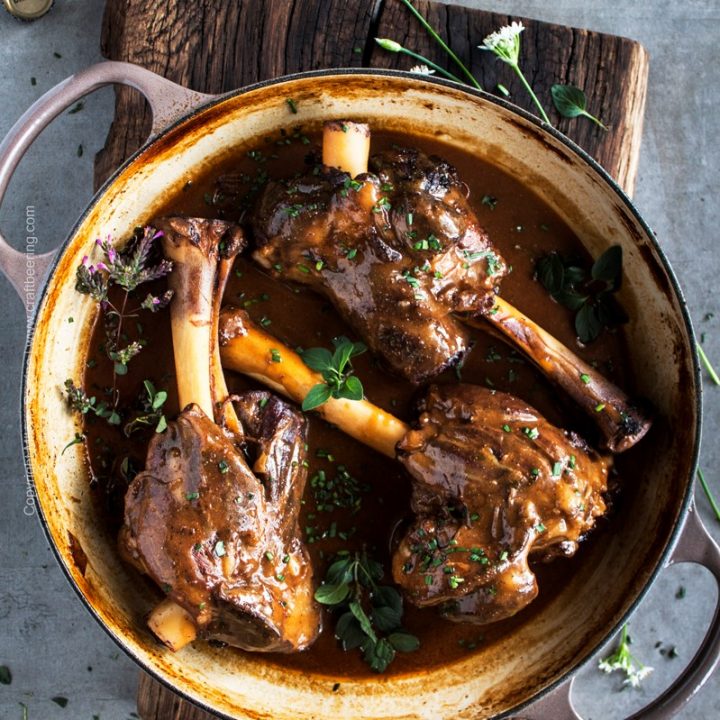
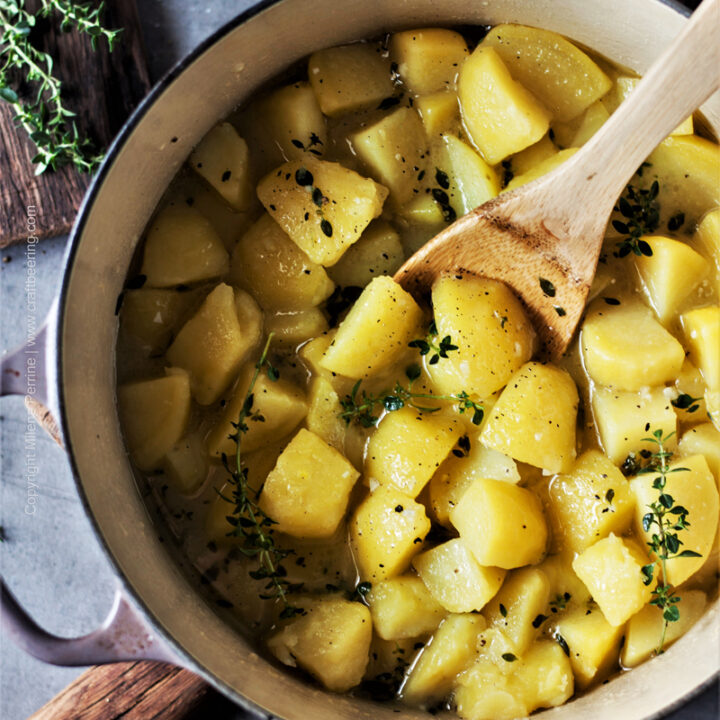
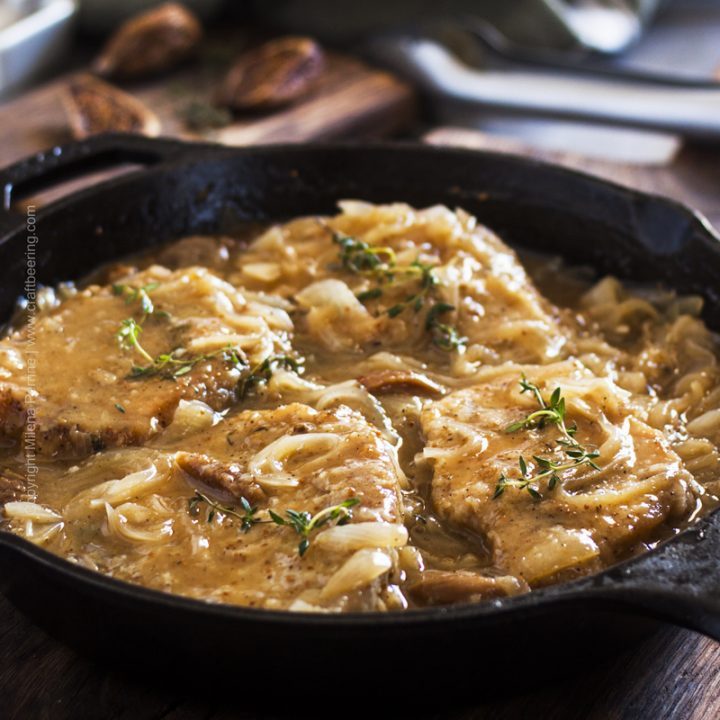
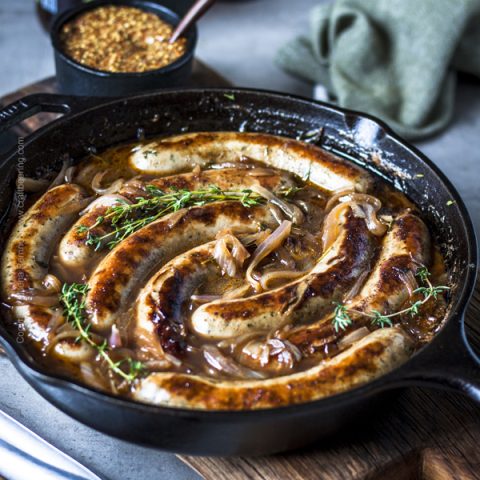
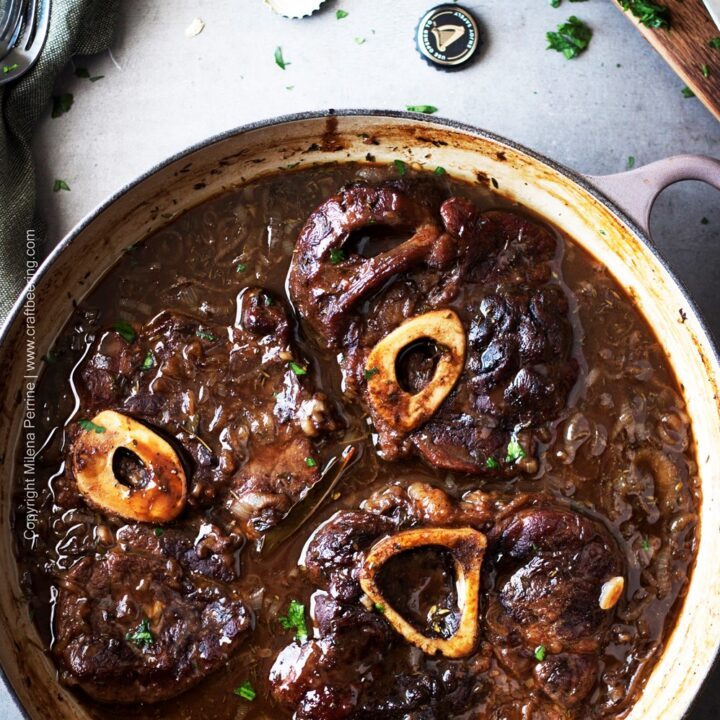
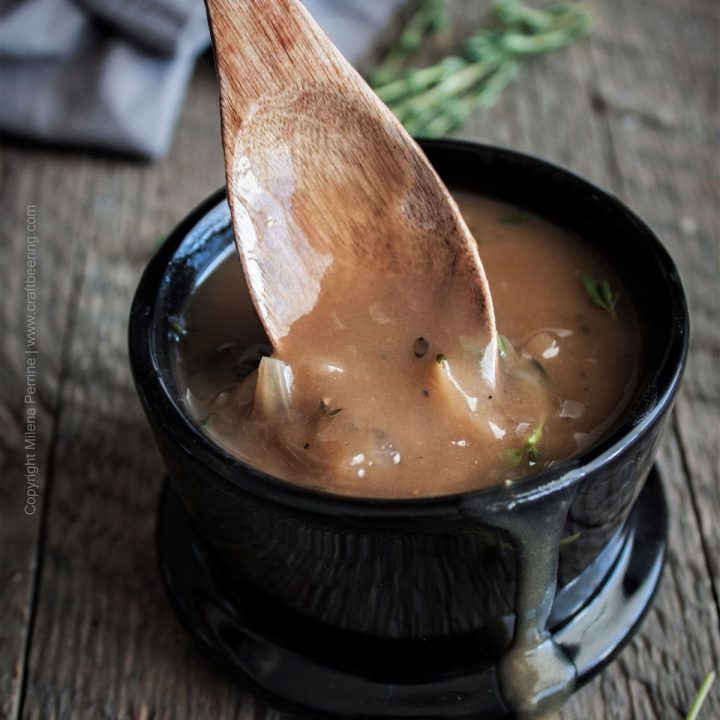
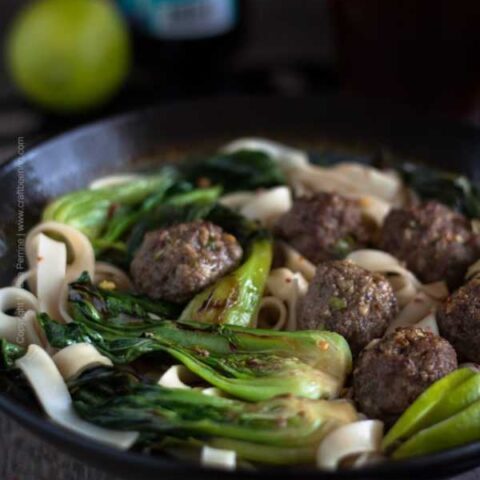
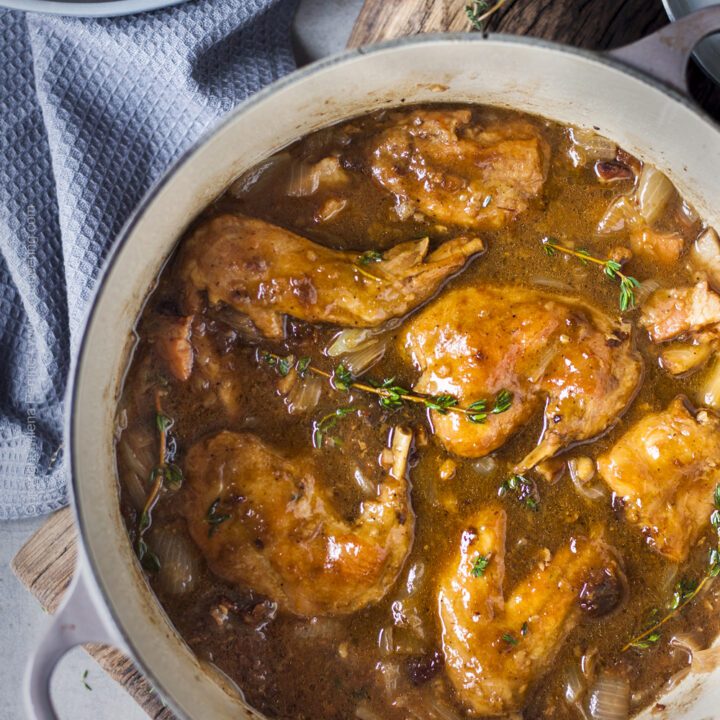
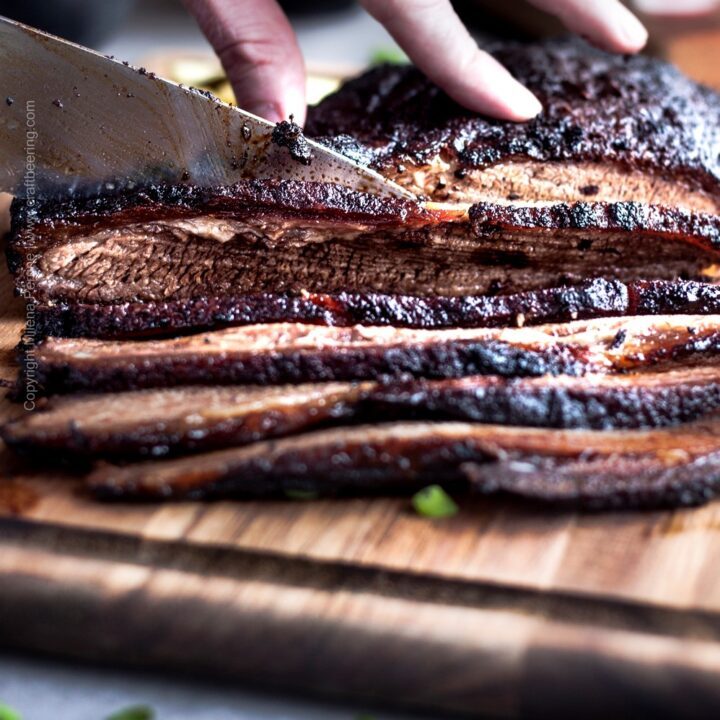
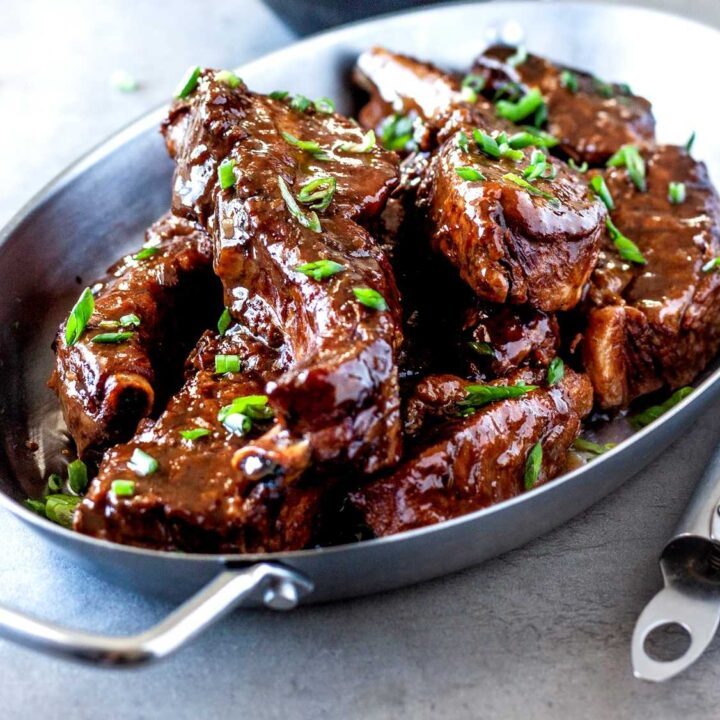
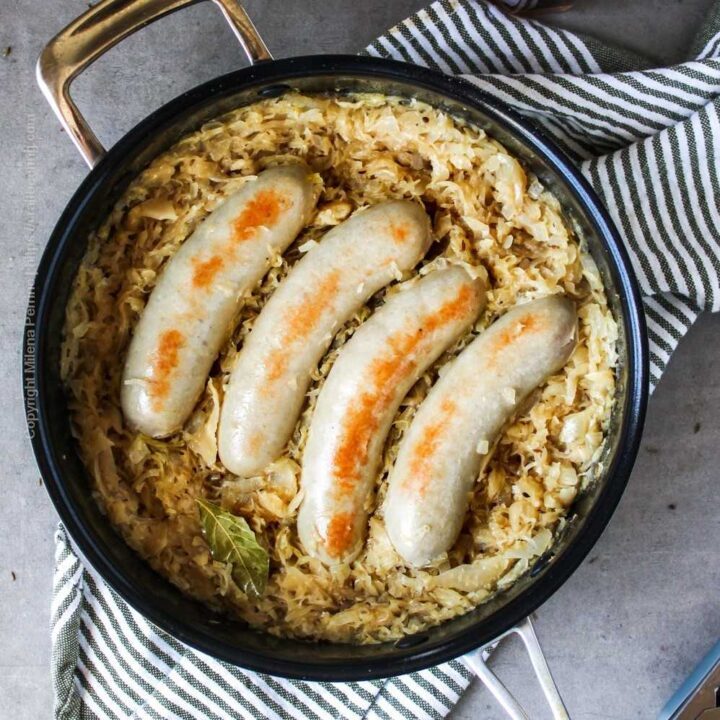
Leave a Reply